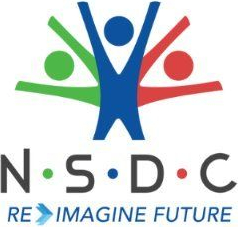Embracing Disruption: HR Trends for 2025

The HR landscape is shifting dramatically. The rise of artificial intelligence (AI) and the emergence of a diverse workforce present both challenges and opportunities for organisations. Technology, particularly AI, is not just a future consideration; it is a current reality that is reshaping organisational structures at every level. The accelerating pace of technological change necessitates a strategic approach to integrating these advancements. Organisations must rethink roles, skills, and processes, focusing not only on adopting new technologies but also on fostering a culture of innovation and adaptability among employees. Embracing this mindset will enable organisations to maximise the benefits of AI and other technological advancements.
While the traditional methods of managing teams are becoming obsolete, HR must adapt to these changes to foster growth and resilience. The Academy to Innovate HR (AIHR) offers world-class, online training programs to future-proof HR. In this context, the recently released AIHR HR Trends Report 2025 explores 11 key HR trends that businesses can leverage to thrive amid disruption. Here’s an overview.
The report broadly categorises the 11 trends under three themes:
- Theme 1: Technological transformation is the business reality
- Theme 2: Shifting talent dynamics
- Theme 3: Tactics for the organisation to thrive
Theme 1: Technological transformation is the business reality
- AI Adaptation: AI is fundamentally altering how businesses operate. The rapid integration of generative AI (GenAI) and the fast-evolving nature of AI creates uncertainty about the future of work and the skills needed to thrive. HR has a unique opportunity to guide organisations through this transition. By fostering an environment of experimentation, facilitating upskilling initiatives, and redesigning job roles, HR can ensure a smooth adaptation to AI technologies while maintaining a human-centric approach.
- AI in HR: While excitement surrounding AI is palpable, many HR departments have yet to incorporate it into their daily functions. Current statistics reveal that only 12% of HR teams utilise GenAI, compared to 34% in marketing. This discrepancy suggests that HR may be missing out on significant opportunities for productivity and innovation. This slow adoption rate can be attributed to a lack of digital skills, uncertainty about suitable tools, and insufficient resources to evaluate AI algorithms. The onus is on HR leaders to harness this technology effectively to drive organisational change.
- Skills Mismatch: As new technologies emerge, the skills required in the workforce are evolving rapidly. This creates a growing mismatch between employees’ current abilities and future demands. Many organisations struggle to anticipate the skills they will need, leading to a reactive rather than proactive approach to workforce management. A staggering 70% of business leaders believe that skills gaps negatively affect performance. To avoid operational disruptions, HR must identify critical skills for today and the future while developing strategies to attract and retain talent with the right capabilities.
- Blue-Collar and “New-Collar” Jobs: As the job market shifts, blue-collar roles are experiencing a resurgence, particularly in manufacturing and technical fields, with opportunities and wages on the rise. New-collar jobs, which require advanced skills in high-tech areas but do not necessarily demand formal degrees, are also flourishing. This trend presents HR with an opportunity to rethink job design and create environments that empower and support these workers. Strategies around recruitment, onboarding, and talent management must adapt to meet the needs of these evolving roles.
Theme 2: Shifting talent dynamics
- Silver Workers: Workers aged 75 and older are the fastest-growing segment of the global workforce, driven by a mix of financial necessity and a desire to remain engaged. Despite this, many organisations often overlook their valuable contributions. By recognising and embracing the aging workforce, companies can unlock new levels of productivity and foster intergenerational collaboration. Prioritising the needs of older workers will not only benefit from their experience but also enhance workplace diversity and inclusivity.
- Women’s Equity: While progress has been made in increasing the number of women in leadership roles–over 10% of Fortune 500 CEOs are now women – barriers to gender equity persist. Many women still face inflexible work practices and limited opportunities for advancement, which can stifle their careers. Companies that actively work to close the gender gap will reap significant economic and cultural benefits, because fostering a more inclusive workplace drives innovation and improves performance.
- Organisational Anxiety:Economic uncertainty and declining consumer confidence have led to heightened anxiety within organisations. As companies pursue cost-effective growth, fears of job security and performance pressures are becoming commonplace, resulting in a climate of stress. To combat this growing anxiety, organisations must address employee concerns and maintain open lines of communication to create a more resilient workforce that is better equipped to handle disruptions.
Theme 3: Tactics for the organisation to thrive
- HR Execution: While strategic HR initiatives are crucial, the successful execution of these plans is equally important. Effective implementation transforms ideas into actionable results, ensuring that HR strategies resonate with employees at all levels. In 2025, organisations will increasingly recognise that the true impact of HR lies in the synergy between strategy and execution. HR teams must work collaboratively to translate high-level goals into practical policies and practices that drive organisational success.
- Embedded HR: The pandemic has accelerated the integration of HR into core business operations. As a result, HR professionals are becoming embedded within teams, contributing more directly to decision-making processes. To maximise their impact, HR must align its strategies with business objectives and work closely with other leaders. By doing so, HR can enhance employee engagement and drive organisational effectiveness.
- Antifragile Workers: In a volatile economic environment, the concept of antifragility– gaining strength from adversity–becomes increasingly relevant. Organisations must foster antifragile workplaces where employees can thrive despite challenges. HR plays a critical role in building resilience by addressing mental health issues and creating supportive environments, leading to a more adaptable workforce.
- Employee Engagement: Despite decades of focus on employee engagement, global levels remain low, with only 23% of employees feeling engaged. The cost of disengagement is staggering, resulting in an estimated US$8.8 trillion in lost productivity. To drive meaningful change, HR must identify the genuine drivers of engagement and implement evidence-based strategies that resonate with employees. By understanding what truly motivates their workforce, organisations can enhance engagement and productivity.
—
In the coming years, HR functions will face a landscape marked by rapid change and disruption. The key to success lies in balancing technological advancements with a human-centric approach, and ensuring that the workforce is prepared to navigate the challenges ahead.
You can access the full report at: AIHR HR Trends Report 2025
Acknowledgement:www.aihr.com


